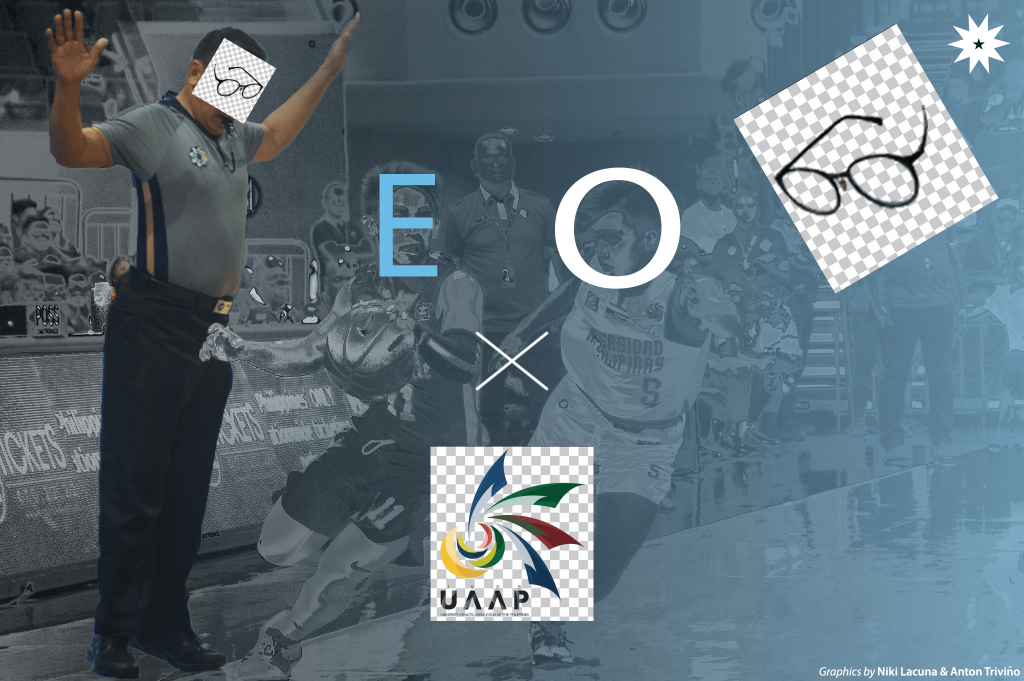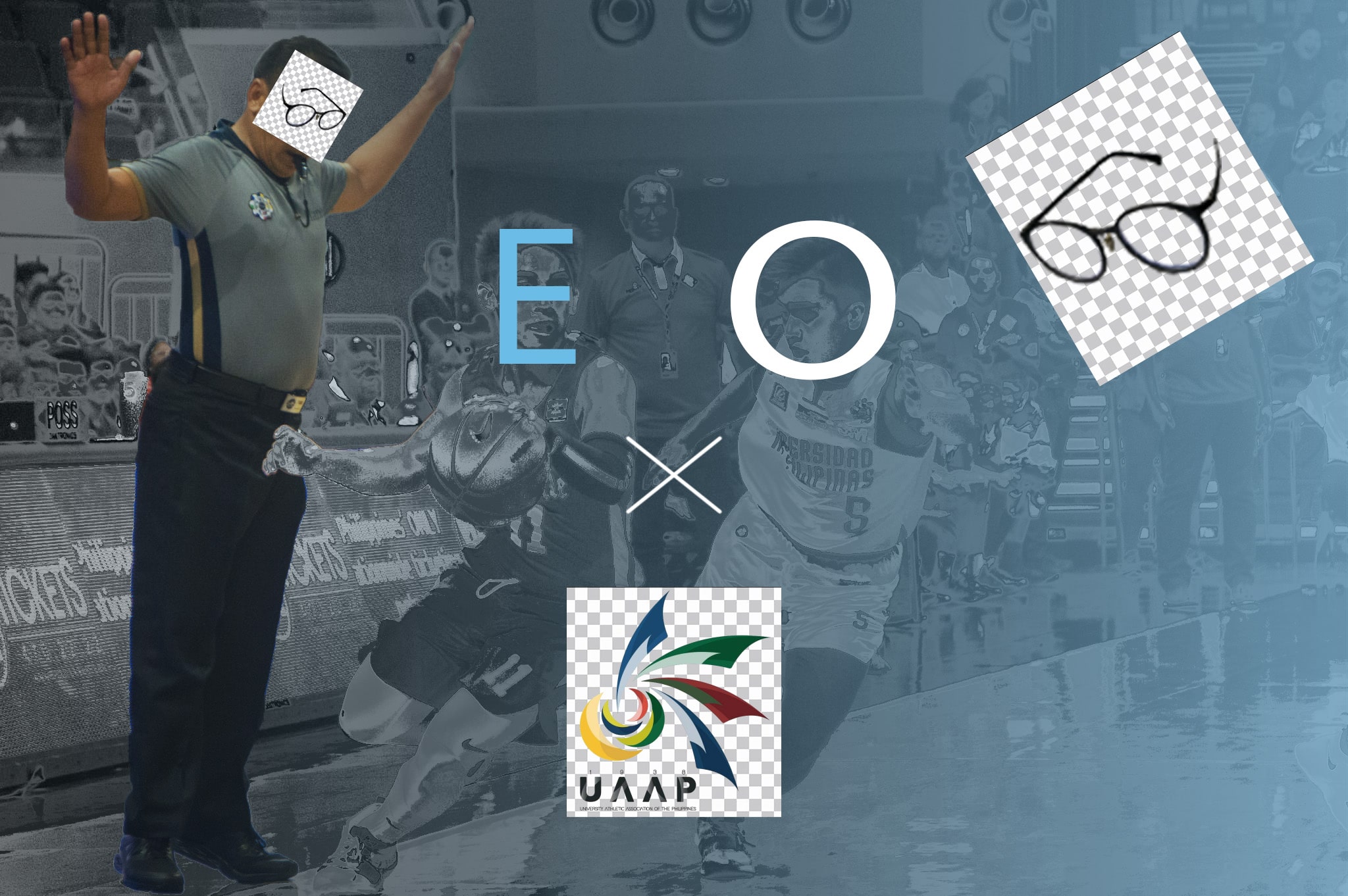One of the major physical difficulties that people around the world suffer from is visual impairment, as the World Health Organization reports that over 2.2 billion people across the world are affected.
In the Philippines alone, about two million people deal with poor eyesight. However, the most shocking statistic is that, after a deep-dive analysis and a study were conducted on the vision of UAAP referees, 100 percent of league officials suffer from visual impairment, causing them to make bad calls throughout each game. This is why the league has formed a partnership with Executive Optical (EO), one of the leading providers of quality eyewear in the Philippines, to help solve this crisis.

Disappointing reality
After the UAAP recently returned from a two-year hiatus, it was found that a lot of complaints reported by disgruntled fans to the commissioner’s office were due to the questionable calls by the referees. Many insisted that traveling violations, missed fouls, and unsportsmanlike instances were not being called.
Among the more notable recent non-calls was from Season 79, where former DLSU head coach Aldin Ayo was famously ejected from an elimination round game for his actions. Specifically, he tried to place a pair of eyeglasses owned by assistant coach Siot Tanquingcen onto the lead referee due to a non-call on the play involving DLSU point guard Thomas Torres and UE big Wilson Bartolome. That clip of the incident went viral on social media, which led to Ayo’s suspension for one game.
In the opening game of DLSU in UAAP Season 84, current head coach Derrick Pumaren was visibly livid on the bench due to numerous non-calls. Justine Baltazar was hit hard by UE’s bigs but no foul was called. After reviewing the tape, commissioner Tonichi Pujante suspended the three referees.
This new partnership was mostly welcomed by the game officials, especially those who had already been wearing eyeglasses due to existing problems. However, a veteran referee confesses that this could mitigate bad calls, which would ensure that bad plays are kept an eye on by game officials. “What if, ayoko?” the referee complains.
(I don’t want to.)
Vision for a brighter future
With the partnership between EO and the UAAP set in stone, referees will start wearing prescription eyewear in Season 84’s second round of tournaments.
As projected by the country’s top sports statisticians, the number of miscalls from UAAP referees will go down by an estimated 75 percent. They accredit this significant drop to the help of prescription eyewear.
Furthermore, ophthalmologists who have studied past film tapes suggest that thanks to this partnership, referees will now be able to gain diehard fans from all participating UAAP schools as well.
“I believe that this [partnership] will bring back the fans’ excitement more than ever. With our top-notch eyewear, we can assure that the fans can have the best experience with improved calls from all referees,” remarks EO President Matta Lhas.
Love for eyes
During games, it is a must for referees to be meticulous due to the dynamic movements and sudden changes of direction of athletes, and due to errant balls. Thus, providing them with contact lenses or sports goggles—instead of glasses—is what EO suggests. “Paano sila magiging agile inside the court if they wear flimsy and unstable eyewear?” comments Lhas.
(How will they be agile…)
The EO president furthers that style is also important, as millions of people around the country have access to UAAP games. He shares that the company will also ensure that all eyewear worn by referees will be stylish and unique, making use of multiple shapes, colors, and sizes. All varying colors are allowed except any that represents the eight UAAP teams in order to avoid speculations of bias—except for green, as this also represents UAAP’s partnership with MILO.
With the help of EO, Pujante formulated new strategies on how to train referees in making the right calls.
All officials currently in the league’s pool of referees shall be tested before the season’s debut for astigmatism, near-sightedness, and far-sightedness, then be given the corresponding eyewear to correct their imperfect visions. They will have the opportunity to test their new vision before the second round of the Men’s Basketball tournament during scrimmages and warm up games between UAAP teams in the bubble.
The UAAP also solidifies that each referee’s performance will be assessed after every game and that there will be repercussions if they are guilty of making multiple mistakes throughout a game. The commissioner affirms, “The referee who misses a major call will be suspended for the next game.”
Pujante also adds that if a referee’s eyesight is found to have no issues, he is still required to wear eyewear—even without grade—to ensure uniformity of all officials’ aesthetics.
Game changer
The decision to implement a new ruling to add prescription eyewear to the uniform of referees has taken the world of Filipino sports by storm. Multiple domestic professional leagues such as the Philippine Basketball Association, Premier Volleyball League, and Philippines Football League have requested for case studies from the UAAP to be submitted regarding the statistical changes in foul calls after the end of Season 84. With this, the Philippine Sports Commission has requested for the heads of these major leagues to come together and discuss the possibility of adding more rules and regulations in order to promote competition and integrity that would benefit the sporting world.
One potential new rule that has come into circulation, according to various insiders, is the “Anti-Crybaby Rule”, where players who complain after a referee has made a call shall immediately be ejected from the game and told to sit in the corner of the court to think about their actions.
Pujante has stated that he is glad that his organization has taken the helm in this new age of rule proposals. “I am proud that the UAAP has inspired the nation to improve the rules of other sports. With these new regulations starting to come in place, I believe that the Philippine sports scene will become competitive with other world-class athletics.”



